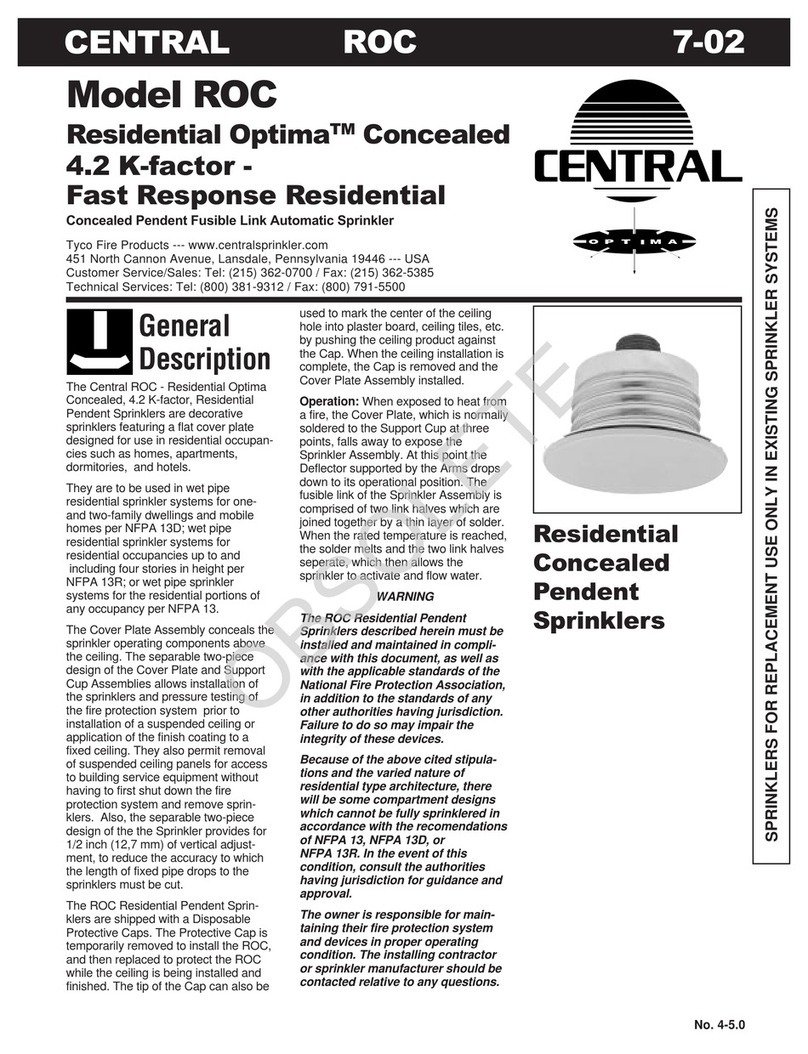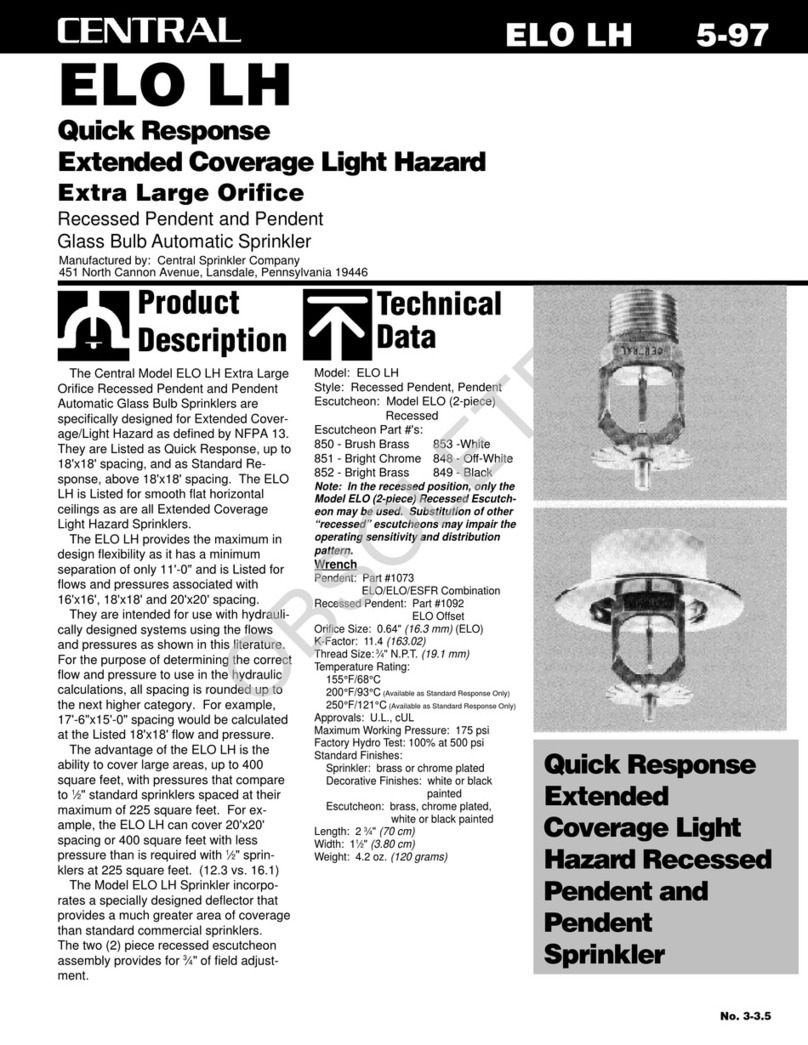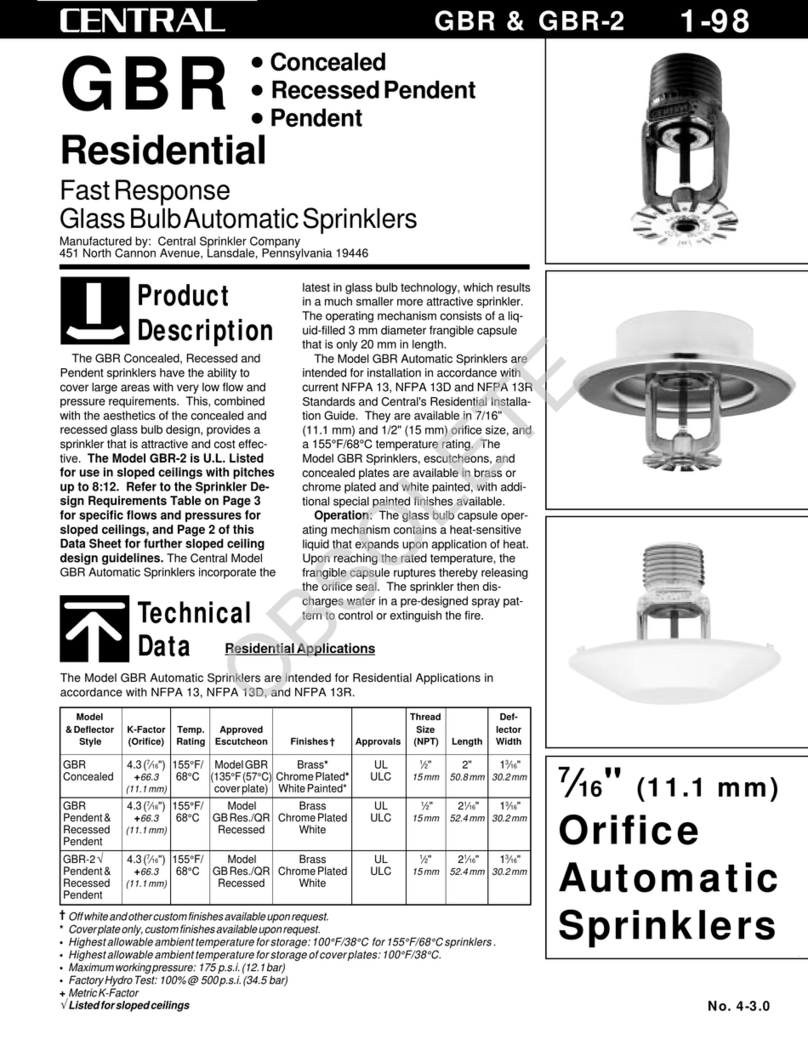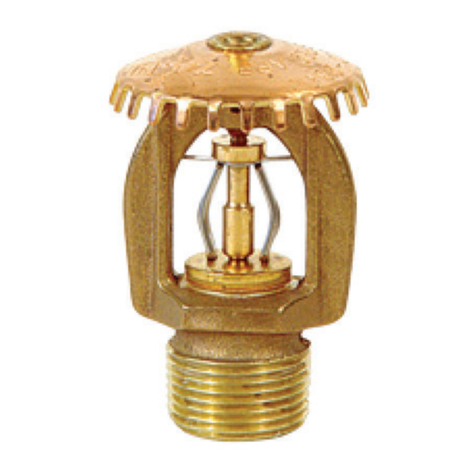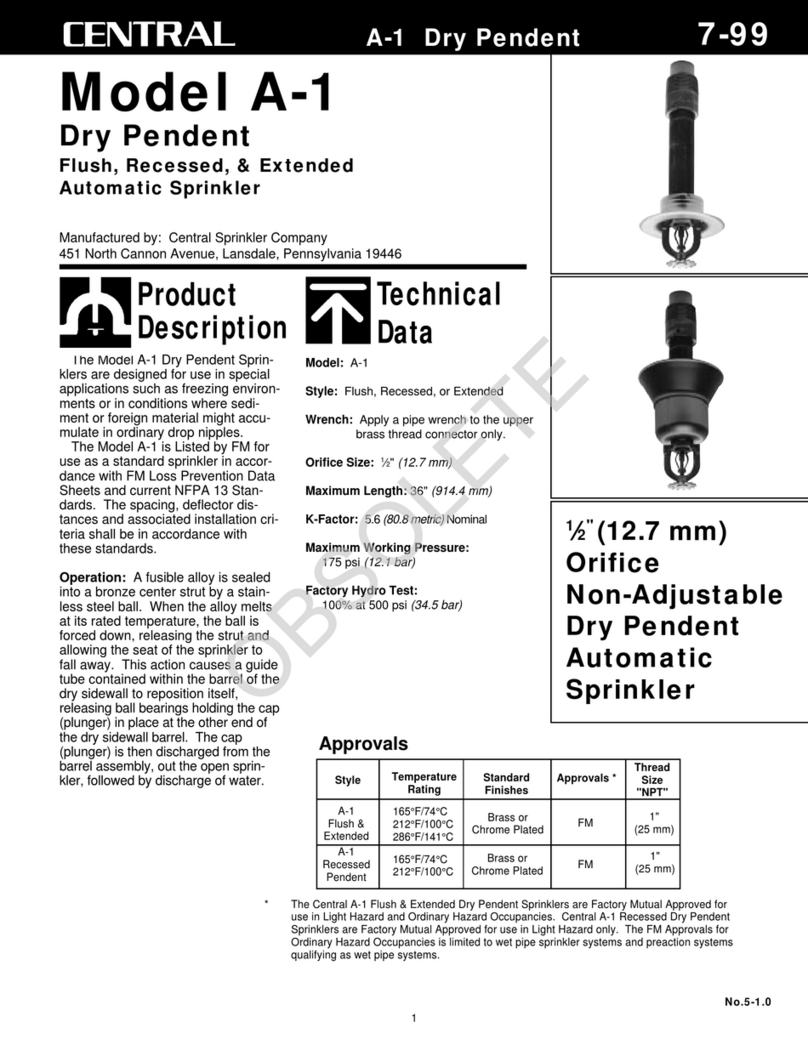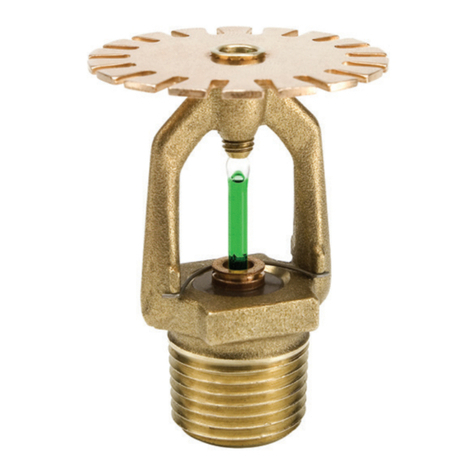
3
Design
Data
Design Requirements — Applications
operated. Replace any sprinkler
exhibiting corrosion or damage;
always use new sprinklers of the
same type and temperature rating as
replacements.
Because the discharge pattern is
critical to protection of life and
property, nothing should be hung or
attached to the sprinkler unit that
would disrupt the pattern. Such
obstructions must be removed. In the
event that construction has altered
the original configuration, additional
sprinklers should be installed to
maintain the protection level.
Do not attempt to replace sprinklers
without first removing the fire protec-
tion system from service. Be certain
to secure permission from all
Authori-
ties Having Jurisdiction
, and notify all
personnel who may be affected
during system shutdown. A fire
watch during maintenance periods is
a wise precaution.
To remove the system from service
mode, first refer to the system
operating guide and valve instruction.
Drain the water and relieve pressure
in the pipes. Remove the existing
unit and install the replacement, using
only the special sprinkler wrench. Be
certain to match the model, style,
orifice, and temperature rating.
A fire protection system that has
been shut off after an activation
should be returned to service immedi-
ately. Inspect the entire system for
damage and replace or repair as
necessary. Sprinklers that did not
operate but were subjected to corro-
sive elements of combustion or
excessive temperatures should be
inspected, and replaced if need be.
The
Authority Having Jurisdiction
will
detail minimum replacement require-
ments and regulations.
Guarantee: Central Sprinkler
Company will repair and/or replace
any products found to be defective in
material or workmanship within a
period of one year from the date of
shipment. Please refer to the current
Price List for further details of the
warranty.
The design and installation of ESFR-1 sprinkler systems must comply with the
applicable standards of NFPA, Underwriter's Laboratories, the Authority Having
Jurisdiction, and, when applicable, Factory Mutual's Loss Prevention Data
Sheets. Installation
All Central Model ESFR-1
Automatic Sprinklers must be
installed according to current NFPA
13 Standards and these installation
instructions. Deviations from these
requirements and standards or any
alteration to the sprinkler itself will
void any warranty made by Central
Sprinkler Company. In addition,
installation must also meet local
government provisions, codes, and
standards as applicable.
The system piping must be properly
sized by hydraulic calculation to
ensure the minimum required flow
rate at the sprinkler. Install
sprinklers after the piping is in place
to avoid mechanical damage; replace
any damaged units.
Upon completion of the installation,
the system must be tested per
recognized standards.
In the event of a thread leak,
remove the unit, apply new pipe joint
compound or tape, and reinstall.
Installation Sequence
Step 1. Use only a non-hardening
pipe joint compound or Teflon* tape.
Apply only to the male threads.
Step 2. Hand tighten the sprinkler
into the fitting. Use appropriate
Central wrench to tighten the unit into
the fitting. A leak-tight joint requires
only 7 to 14 ft.-lbs. of torque; a
tangential force of 14 to 28 lbs.
delivered through a 6" handle will
deliver adequate torque. Torque
levels over 21 ft.-lbs. may distort the
orifice seal, resulting in leakage.
Care&
Maintenance
Sprinklers must be handled care-
fully. They must not be transported
or stored where ambient temperature
may exceed 100°F/38°C. For best
results, store them in a dry, cool
location in the original shipping
package.
Do not install sprinklers that have
been dropped or visibly damaged.
Sprinklers should never be painted,
coated, plated, or altered in any other
way from manufactured condition or
they may not function properly. Any
sprinklers altered in such manner
must be replaced.
The owner is responsible for the
proper operating condition of all fire
protection devices and accessories.
The NFPA Standard 25 entitled,
“Inspection, Testing and Maintenance
of Water-Based Fire Protection
System”
, contains guidelines and
minimum maintenance requirements.
Furthermore, the local
Authority
Having Jurisdiction
may have addi-
tional regulations and requirements
for maintenance, testing, and inspec-
tion that must be obeyed.
It is advisable to have sprinkler
systems inspected regularly by a
qualified inspection service. Length
of time between such inspections can
vary due to accessibility, ambient
atmosphere, water supply, and site
activity.
Do not attempt to re-assemble or
otherwise reuse a sprinkler that has
*Teflon is a trademark of the DuPont Corp.
Step 3. Following installation, the
protective cardboard guard must
be removed.
D
WH
